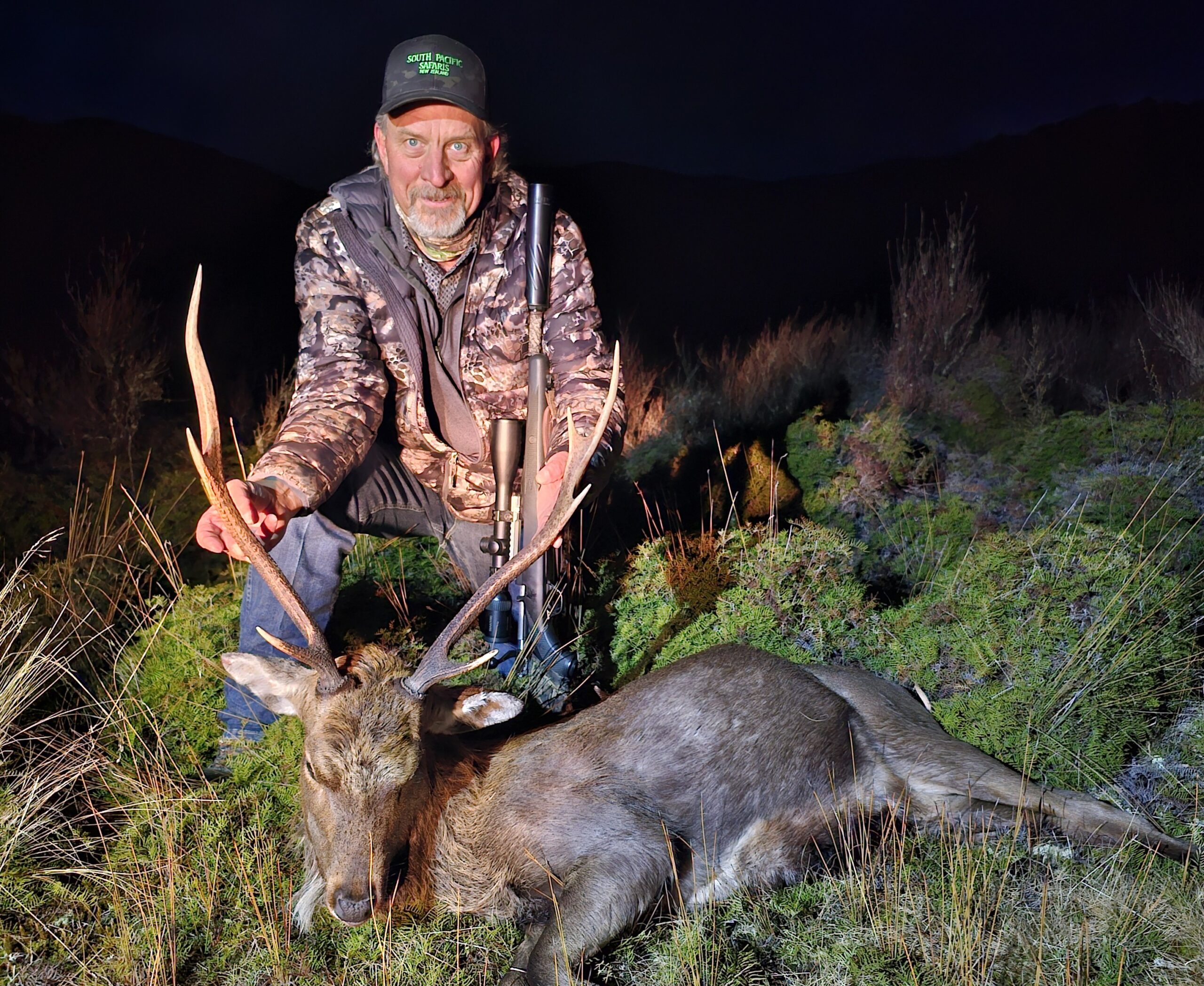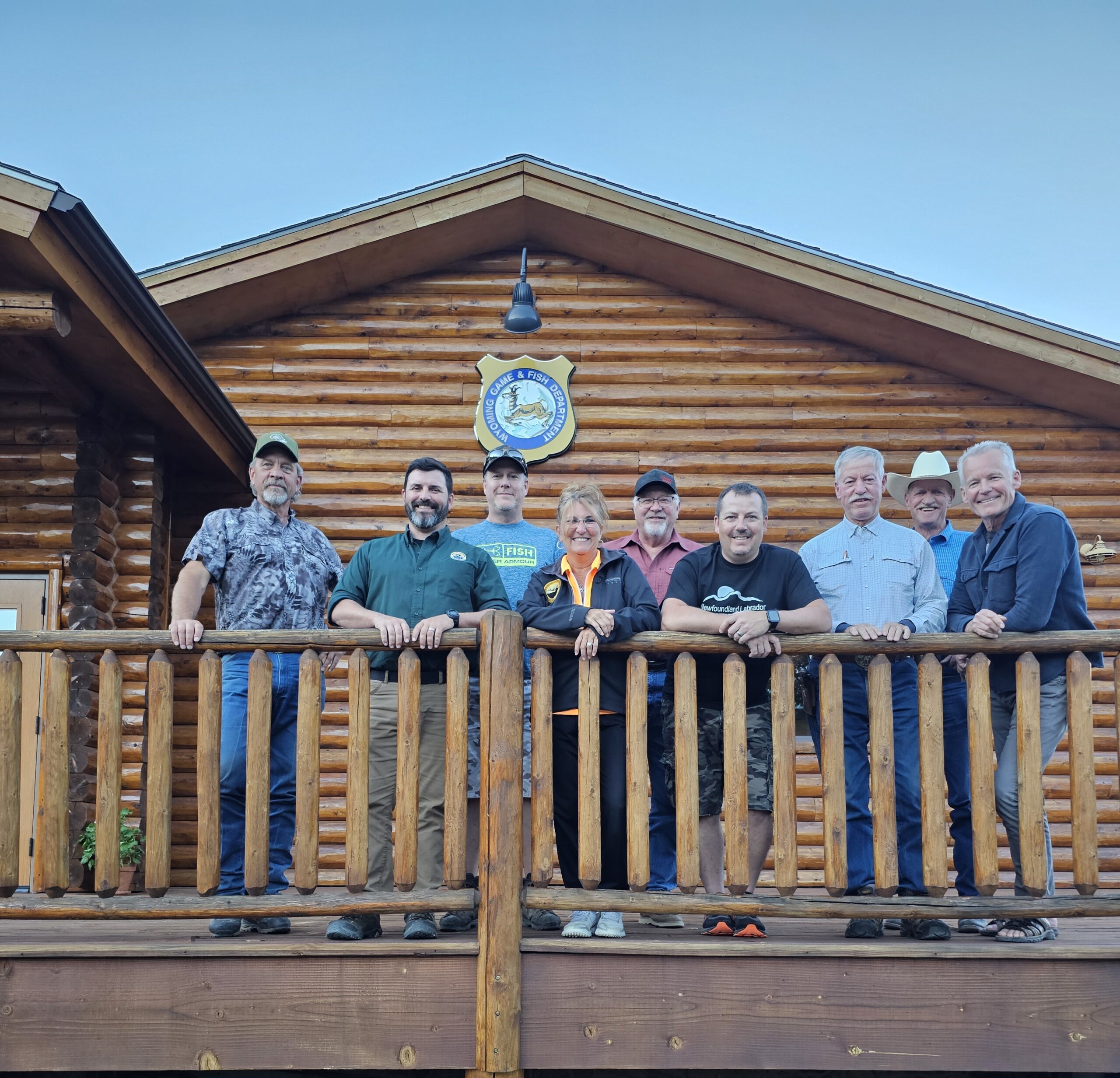 Known as the “Scrivens” ram, this desert bighorn has travelled a whole lot more since a meat hunter took it in 1942 than it ever did when it was walking and running around on its own four hooves.
Known as the “Scrivens” ram, this desert bighorn has travelled a whole lot more since a meat hunter took it in 1942 than it ever did when it was walking and running around on its own four hooves.
Often the journey (journey is “safari” in Swahili) is more interesting than the final destination, and this saga is no different.
To tell the story, it is best to talk about where this magnificent ram is now, where it all started and then fill in the blanks between.
Currently, the Scrivens ram towers majestically in the customer service lobby of the Arizona Game & Fish Department offices in Phoenix. It is there, on a long-term loan from its owners, the Arizona Desert Bighorn Sheep Society, which also is involved in projects with the state’s Rocky Mountain Bighorn Sheep population.
The ram returned to Arizona this year after spending decades, going from one place to another – always respected and revered, regardless where it happened to be.
It all began in the middle 1930s when brothers Carl, Floyd and Don became interested in Baja California, Mexico.
By 1942, Carl had enlisted in the U.S. Navy (shortly after the attack on Pearl Harbor). He and his brothers wanted to have one last memorable trip before Carl reported to active duty.
They eventually found themselves on a remote ranch on the southern end of the Sierra San Pedro Martir in northern Baja California where they were about to start their own sheep hunt when they spotted the skull and horns of a huge desert bighorn ram in a dilapidated old wagon.
“Our hunt was fairly successful and we took a mediocre ram,” Scrivens recalled years after the discovery of the ram. “I kept thinking about that big head back at the rancho. When we returned from the hunt, I bartered for and secured the head for a mere eight pesos and a wool sweater Scrivens was wearing that caught the eye of a vaquero.
“According to the vaquero at the ranch, the Arizona Bighorn Sheep Society reported, the ram had been killed the previous year by an Indian meat hunter, who left the head lying on the ground. A vaquero later took the head to the rancho where Scrivens discovered it.
“During the time I was on active duty in the Navy, I wrote a short article about the ram and submitted it to Outdoor Life (magazine),” Scrivens reported in a year 2000 issue of Wild Sheep magazine. “Shortly after my release from active duty, I was contacted by Mr. Samuel Webb of the Boone & Crockett Club. He measured the head in 1946 and scored it at 205 1/8 points. So far, it has not been surpassed.
 “In 1990, Mr. J.J. McBride of B&C viewed the head and said he felt it should be on public display,” Scrivens continued. “I agreed, providing that he could secure a cape for it.”
“In 1990, Mr. J.J. McBride of B&C viewed the head and said he felt it should be on public display,” Scrivens continued. “I agreed, providing that he could secure a cape for it.”
The ram was bequeathed in 1992 to the Arizona Desert Bighorn Sheep Society, of which Scrivens had been a lifelong member.
“They loved the desert,” Cimellaro said. “They shared many campfires with members of the sheep society. That affinity is what gave Carl the idea to allow us to be custodians of the ram. He said, ‘This is the perfect place because the sheep society is always going to care about sheep.’ ”
Following two years of searching, a cape was secured on loan from the Arizona Department of Game and Fish, and the taxidermy work was done by Jim Gay of Riverton, Wyoming.
Since then, the full body mount now on display replaced the initial mount. Taxidermist Henry Aguilar of Kingman, Arizona, did the current mount.
For years the ram was on display in the National Collection of Heads and Horns, owned by the Boone & Crockett Club in the Buffalo Bill Historical Center in Cody, Wyoming. Next stop was the Bass Pro Shops headquarters in Springfield, Missouri.
Pete Cimellaro a past president of the Arizona Desert Bighorn Sheep Society, who was involved in efforts in the early 1990s that resulted in the ram going on public display, also was the one who brought it back to Arizona earlier this year.
“This is the ideal place for this ram,’ he said. “It’s home. It’s just the epitome of what a desert bighorn sheep looks like – and a really, really big one.”
Members of the Arizona Desert Bighorn Sheep Society and the Arizona Game & Fish Commission gathered around the Scrivens ram during formal dedication this past April. Commission Chair Kurt R. Davis honored Society President Brad Remfrey and the Society for its efforts on behalf of wildlife conservation.
The Arizona Desert Bighorn Sheep Society was recognized by the Commission for being one of the state’s earliest conservation partners. In order to accomplish its mission, the ADBSS has established the following eight goals:
1) Develop water resources for bighorn sheep.
2) Reintroduce bighorn sheep into suitable historic ranges.
3) Prevent human encroachment onto bighorn sheep habitat.
4) Assist government agencies with bighorn sheep population surveys.
5) Support the reduction of feral burro populations in bighorn sheep habitat.
6) Educate the public about bighorn sheep and their survival needs.
7) Promote research needed for better management of bighorn sheep.
8) Support efforts to reduce competition with domestic livestock and predators where necessary.
 For a variety of reasons, Arizona currently has large tracts of otherwise ideal habitat that is unable to support bighorn sheep due to a lack of water. Because of this, waterhole development has been an area of special emphasis for the Society. The Society has constructed nearly 200 waterhole development projects in cooperation with the Arizona Game and Fish Department, the Bureau of Land Management, and the U.S. Fish and Wildlife Service. The Society has provided the funds for a large number of these projects, and volunteers from the Society have provided the bulk of the physical labor.
For a variety of reasons, Arizona currently has large tracts of otherwise ideal habitat that is unable to support bighorn sheep due to a lack of water. Because of this, waterhole development has been an area of special emphasis for the Society. The Society has constructed nearly 200 waterhole development projects in cooperation with the Arizona Game and Fish Department, the Bureau of Land Management, and the U.S. Fish and Wildlife Service. The Society has provided the funds for a large number of these projects, and volunteers from the Society have provided the bulk of the physical labor.
The typical waterhole development project takes place in extremely remote country, necessitating the use of a helicopter to shuttle in supplies, equipment, and sometimes the volunteer workers. Even with the hundreds of hours of labor donated by the Society's volunteers, the total cost of the average project runs about $35,000.
The Society also is active in bighorn sheep relocation projects. Originally, bighorn sheep could freely roam between the mountain ranges that supported them. Indications are that they did so on a frequent basis in response to drought conditions, over crowding, predation, other factors. Now, however, the deserts that separate these mountain ranges have roads, canals, agricultural fields, and other cultural features that prevent that migration. As a result, bighorn sheep are unable, in most cases, to naturally repopulate mountain ranges from which they have become extirpated.
“For this reason, the Society has aggressively supported the Arizona Game and Fish Department, the Bureau of Land Management, and the U.S. Fish and Wildlife Service in their bighorn sheep transplant programs. To date, 1066 sheep have been successfully transplanted,” the Society reported. “The transplants have established viable populations in ten mountain ranges that had no bighorn prior to these transplants. In addition, they have supplemented remnant bighorn populations in many other locations, restoring vitality to those herds and allowing them to expand both their ranges and numbers. Some desert bighorn sheep have been relocated to Colorado, New Mexico, Utah, and Texas in exchange for Rocky Mountain bighorns and pronghorn antelope.
“Like waterhole projects, sheep transplants are expensive. The average transplant of twenty sheep will cost $20,000,” the Society explained.
Significantly, the Society’s efforts stand as a tribute to the meaningful contributions made to wildlife conservation by hunters. And there are some really dedicated hunters within the ranks of the Arizona Bighorn Sheep Society.
The Scrivens ram can be viewed during normal working hours at the Arizona Game & Fish headquarters located at 5000 W. Carefree Highway, Phoenix, AZ 85086. Hours are 8 a.m. to 5 p.m. weekdays, except for holidays. For more information, visit www.azgfd.gov, or call (602) 942-3000.



